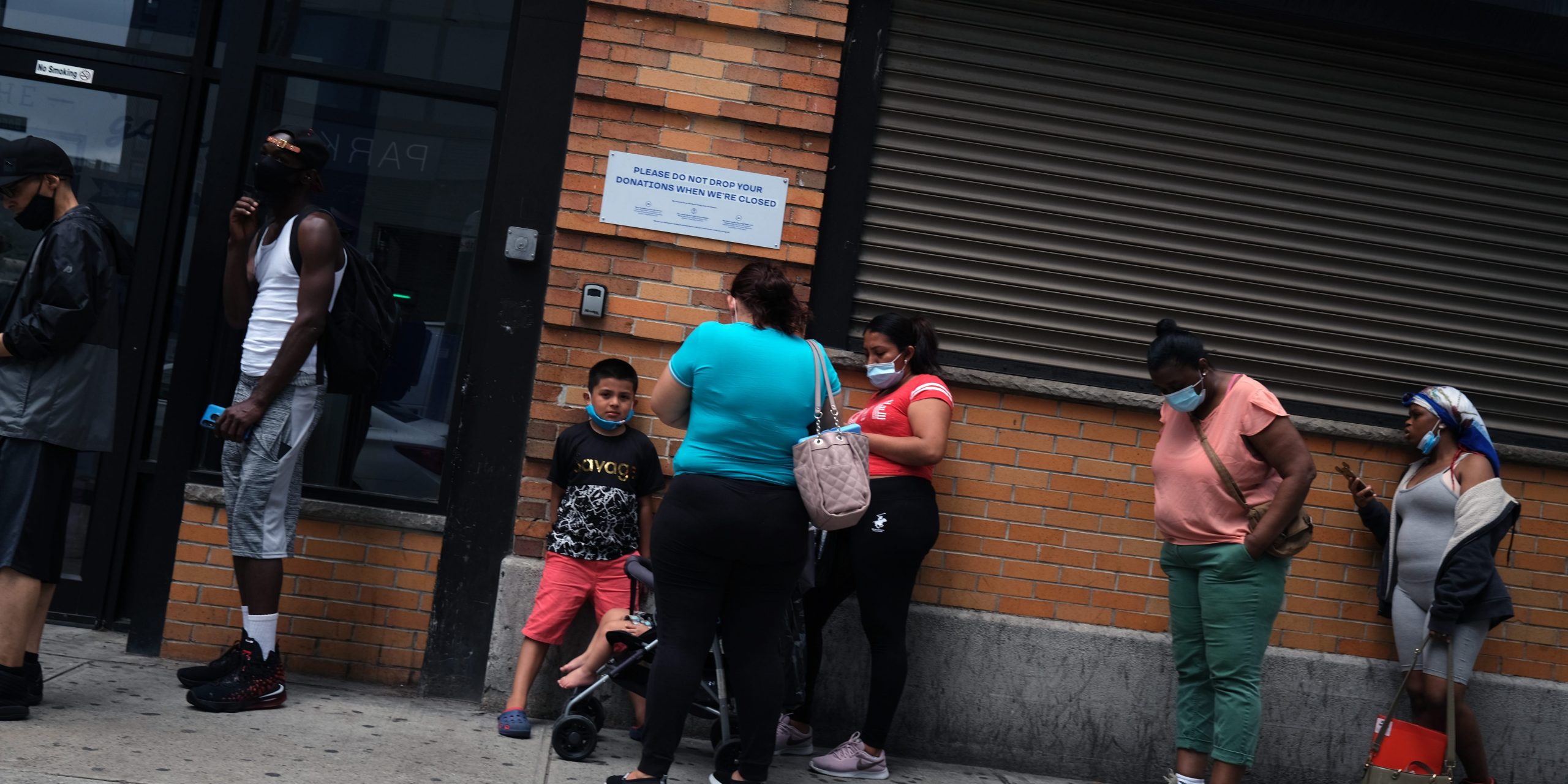
- The US Bureau of Labor Statistics on Friday said the country added 245,000 jobs in November, far fewer than the 460,000 additions expected by economists surveyed by Bloomberg.
- The figure signaled a decline from the revised 610,000 job additions seen in October.
- The unemployment rate fell to 6.7% last month from 6.9%, matching economist expectations.
- The reading marks the seventh straight month of job additions after the pandemic drove outsize losses in April.
- Still, the weakening rate of improvement signals the labor market will struggle to recover as COVID-19 cases surge higher.
- Visit Business Insider’s homepage for more stories.
The US labor-market recovery continued through November, although the pace of new job additions slowed as soaring COVID-19 case counts and partial lockdowns cut into hiring activity.
American businesses added 245,000 nonfarm payrolls last month, the Bureau of Labor Statistics said Friday. The total landed well below the 460,000 additions expected by economists surveyed by Bloomberg. It also marked a drop from the revised 610,000 jobs added in October.
The US unemployment rate fell to 6.7 from 6.9%, according to the report, matching economist expectations. The rate has fallen steadily from the 14.7% peak seen after the pandemic first froze economic activity, but the pace of improvement has slowed considerably through the fall.
The Friday report marks the seventh straight month of job gains after the historic losses seen in April.
Digging deeper
The government data provides economists with the most detailed look yet at where hiring weakened heading into the holiday season. Roughly 14.8 million Americans cited the pandemic as the main reason why their employer ended operations. That’s down from 15.1 million people in October.
About 3.9 million Americans said the coronavirus is the main reason why they aren't seeking employment. That rose from 3.6 million in October.
The share of Americans telecommuting climbed to 21.8% from 21.2% last month. The move came as state and local governments reinstated some economic restrictions to curb the virus's spread.
Though the labor market continues to recover, a growing number of job losses are turning permanent. The number of temporary layoffs in the US fell to 2.8 million from 3.2 million in October. The decline suggests the economy faces significant hurdles as it tries to return to pre-pandemic levels of employment.
A worsening backdrop
The state of the pandemic suggests the labor market's rebound will only slow further into the new year. The US reported 210,161 new coronavirus cases on Thursday, according to The COVID Tracking Project. Hospitalizations hit 100,667, and total deaths surpassed 267,000. Stricter lockdown measures have stifled hopes for an acceleration in activity, though holiday-season spending could buoy the economy through December.
ADP's private payrolls report for November showed a similar weakening. The US private sector added 307,000 payrolls last month, according to the report published Wednesday. Economists expected 440,000 additions. The reading also dropped sharply from the revised 404,000 payrolls added in October.
Weekly jobless claims - a more volatile but timelier look at the labor market - offer a glimmer of hope. Filings for unemployment benefits fell to 712,000 for the week that ended Saturday, the Labor Department said Thursday. The reading landed below the consensus estimate of 775,000 and snapped a two-week streak of increases.
Continuing claims, which track Americans receiving unemployment benefits, dropped to 5.5 million. That also came in below forecasts.
Chances of a year-end stimulus deal also improved through the week and could extend key lifelines for millions of jobless Americans. Congressional Democratic leaders embraced a $908 billion aid proposal on Wednesday, marking a major step forward in stimulus negotiations after months of legislative gridlock. Though Senate Majority Leader Mitch McConnell hasn't yet shown support for the measure, Senate Republicans including Lindsey Graham and Chuck Grassley have warmed to the proposal.
The bipartisan package includes funds for state and local governments, a $300-per-week boost to federal unemployment benefits, and an extension to the Paycheck Protection Program.

